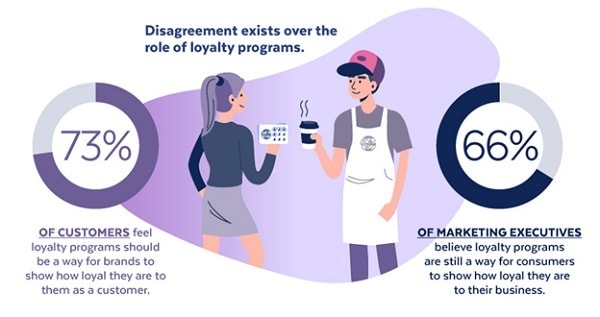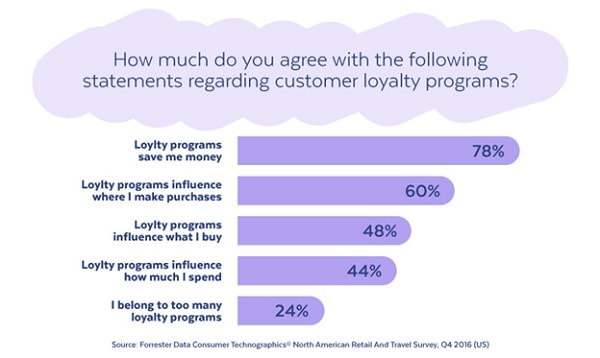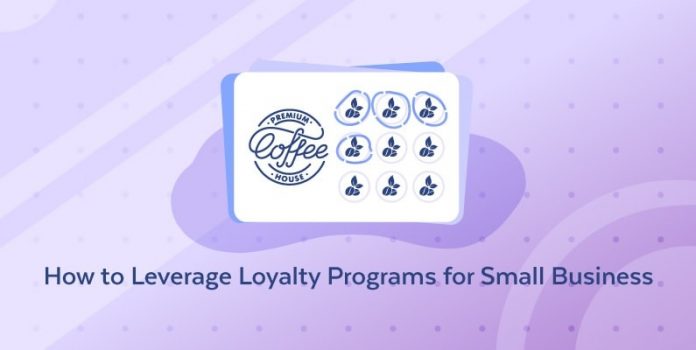#sponsored
There are many types of loyalty programs, and they all incentivize returning customers. If you’re looking for a way to overcome the often-expensive task of enhancing your business, a loyalty program may be part of the solution.
Why Should You Start a Customer Loyalty Program?
The notion of a customer loyalty program sounds pretty simple. For the most part, it’s true: rewarding customers for purchasing products and services at your business will encourage them to make repeat purchases at your business. There are many statistics that highlight the power of loyalty programs for small businesses.
Acquiring a new customer is anywhere from five to 25 times more expensive than keeping an existing one, according to Harvard Business Review.
Increasing customer retention rates by just 5 percent can increase profits by 25 to 95 percent, based on research from management consulting firm Bain & Company. Authors noted “in industry after industry, the high cost of acquiring customers renders many customer relationships unprofitable during their early years.”
Participants in retailers’ customer loyalty programs provide 12 to 18 percent more revenue than those who don’t participate in loyalty programs, according to research from management consulting and professional services firm Accenture. Retailers included specialty, big-box, department, convenience and drug stores.
Seventy-four percent of consumers choose a store based on a strong loyalty/discount program, according to market research company IRI.
Fully-engaged customers offer a 23 percent premium in terms of share of wallet, profitability, revenue and relationship growth compared to the average customer, according to a report from Gallup.
The figures speak for themselves, and that’s why customers have plenty of options when it comes to what they look for in a loyalty program. According to Forrester Research, 72 percent of U.S. adults belong to at least one loyalty program. Of those who have enrolled in loyalty programs, they belong to nine. Data from management consulting firm McKinsey & Company suggests that 25 to 50 percent of a brand’s highest spending customers also shop with its competitors.
The takeaway is that customer loyalty programs are powerful opportunities for your business — but use them carefully. Ineffective programs are just as bad as poor customer service, and simply having a loyalty program does not guarantee your customer base will grow. A survey from customer relationship company Vision Critical found that 42 percent of Americans will stop shopping with a brand after two bad service experiences, regardless of whether the brand has a customer loyalty program.

Types of Loyalty Programs for Small Businesses
What type of loyalty program should you choose? Take a look at the following examples to see what might appeal to your customers. Also consider practical issues, such as how it would work into the point-of-sale structure of your business, how simple it is to use and any technological integration required.
Punch Cards
Punch cards are incredibly simple to use. Using a hole puncher or stamp with a special symbol, customers receive a punch or some other proof of their visit when they make a purchase. Once they’ve reached a certain threshold, they get a free item or reward.
Pros: Punch cards are easy to use and understand.
Cons: Punch cards may seem a bit archaic, and there’s a lack of flexibility for obtaining customer data and for implementing rewards. People can lose cards or prefer not to carry one around.
Membership Cards
Membership cards have a barcode that can be scanned when a purchase is made. Then, points or visits are compiled before rewards are earned.
Pros: Membership cards can be looked up electronically, which is good for the customer’s convenience and for obtaining customer data.
Cons: Some customers may prefer something completely electronic.
By using an email address, customers can easily sign up for an account and receive rewards.
Pros: Only asking for an email address is simple and avoids lengthier sign-up processes. This type of loyalty program enables you to send marketing messages and notifications about rewards to customers.
Cons: You’ll need a way to organize data and be able to leverage it well for marketing purposes.
Mobile Apps
Like punch cards and membership cards, you can scan barcodes located on the mobile app when customers make purchases. Unlike the other programs mentioned, there are no physical items associated with this type of account.
Pros: Customers comfortable with technology will enjoy logging into an app. Having a fully technological system gives you more options in terms of collecting and organizing data, presenting rewards and communicating with customers. Mobile payment services such as Square enable you to create a loyalty program within the app.
Cons: Some customers will balk at having to use apps. Developing mobile apps can be costly.
Other Options
It’s important to realize that not only are there several types of loyalty programs, but there are multiple ways to customize your loyalty program. Here are some examples.
Many points-based programs and tier systems use membership cards and mobile apps. Points and tiers introduce ways for customers to reach a certain status to obtain even more rewards.
Gamification offers another dimension for loyalty programs. An example is raffles using past receipts, or seeing which customer had the most location-based online check-ins on a particular social media network.
Fee-based programs, like Amazon Prime, require payment for exclusive rewards.

What to Consider When Creating a Loyalty Program
Customers want to save money, but they also want something extra. Forrester Research found that 59 percent of U.S. online adults who belong to a customer loyalty program want to receive special offers or treatment not available to other customers. Furthermore, 69 percent find special treatment important. That means more than points and discounts; they want enhanced customer services, like member-only events or services.
As for the business end, keep your goals in mind. According to BIA/Kelsey and Manta, before figuring out the specifics of your loyalty program, you should start with a quantifiable goal, such as “decreasing customer churn by 20 percent in the next 18 months.” You can then build the program around that goal. For example, you might offer an incentive for customers who sign a long-term agreement or contract for a monthly service.
Also, consider exploring automated ways to run your loyalty program, such as commercial solutions or in-house technology systems. More automation means that managing and maintaining a program is easier, and you’ll be able to spend more of your time focusing on the purpose of loyalty programs — customer retention. Automation also helps with analyzing the effectiveness of the program and making strong use of your customer’s information.
Make sure you leverage your loyalty program to create new marketing campaigns, assess how the program is performing and examine the metrics that impact your business. Balancing all of these factors can be overwhelming, but you can learn the dynamics of marketing, business metrics and what it takes to run a successful business with an online MBA. You’ll receive a strong education that’s designed to enhance your entrepreneurial skills and give you the tools to grow your business.
The fully online MBA programs from Southeastern University are offered in a way that allows you to maintain your personal and professional commitments.







